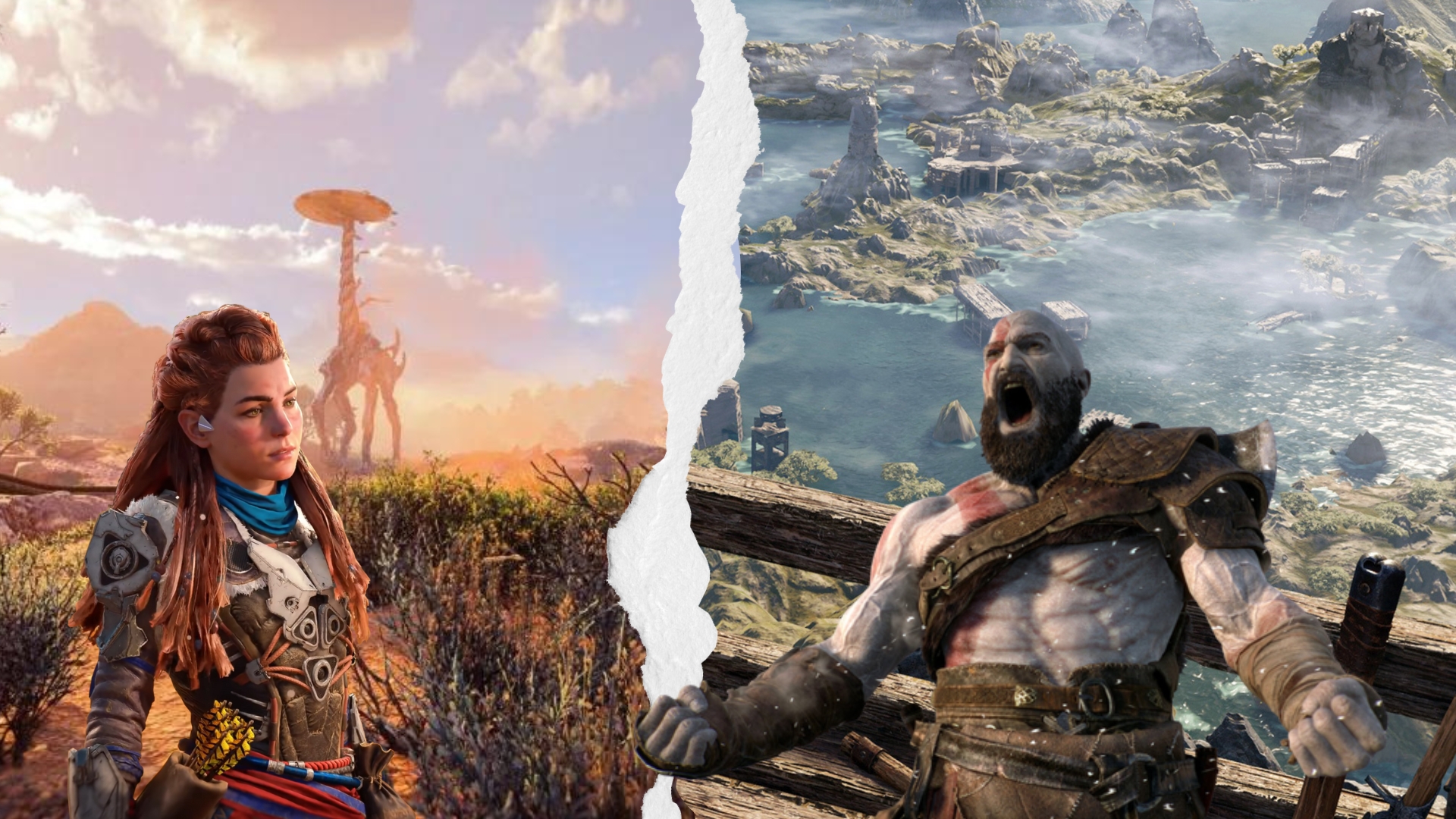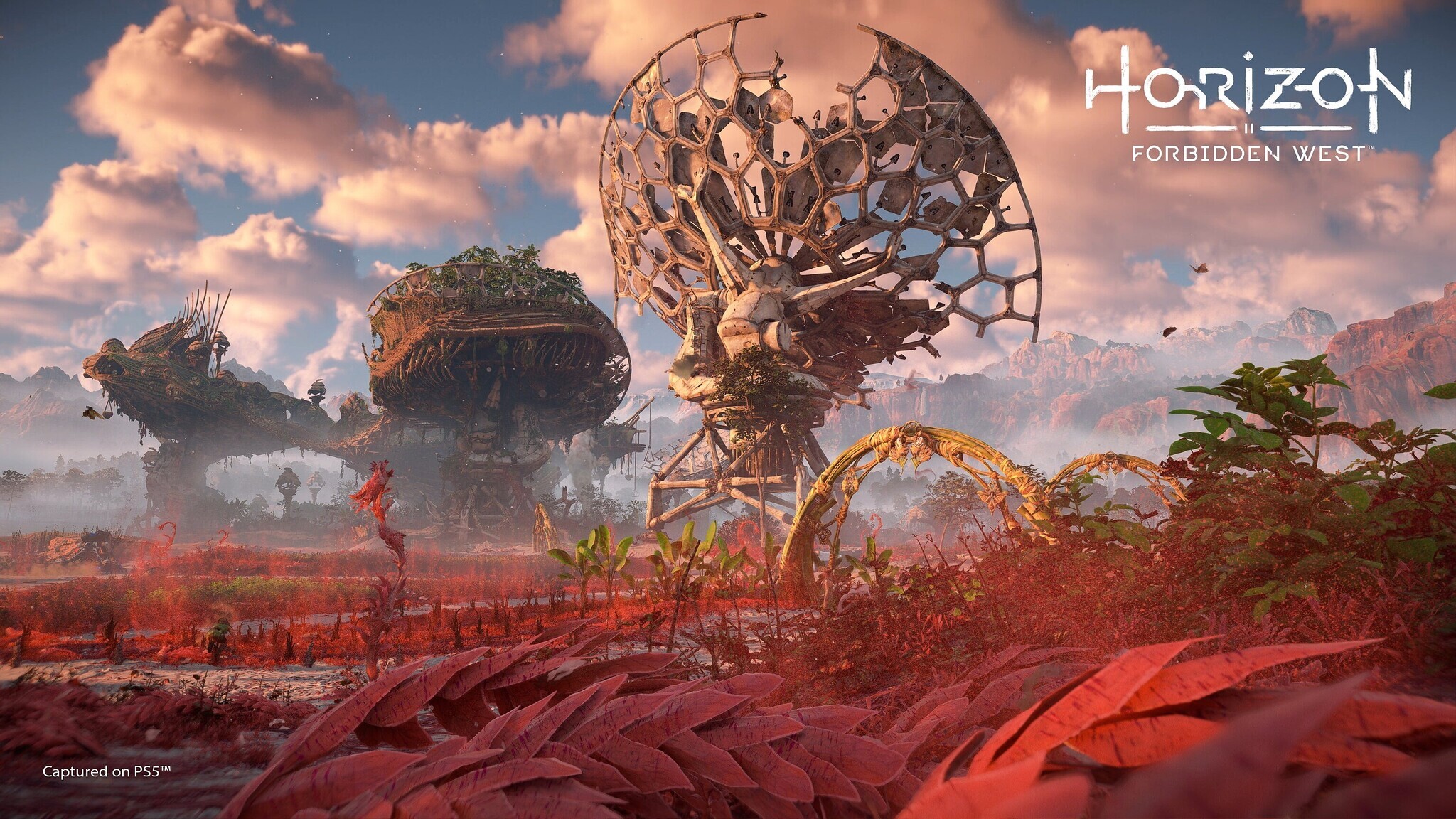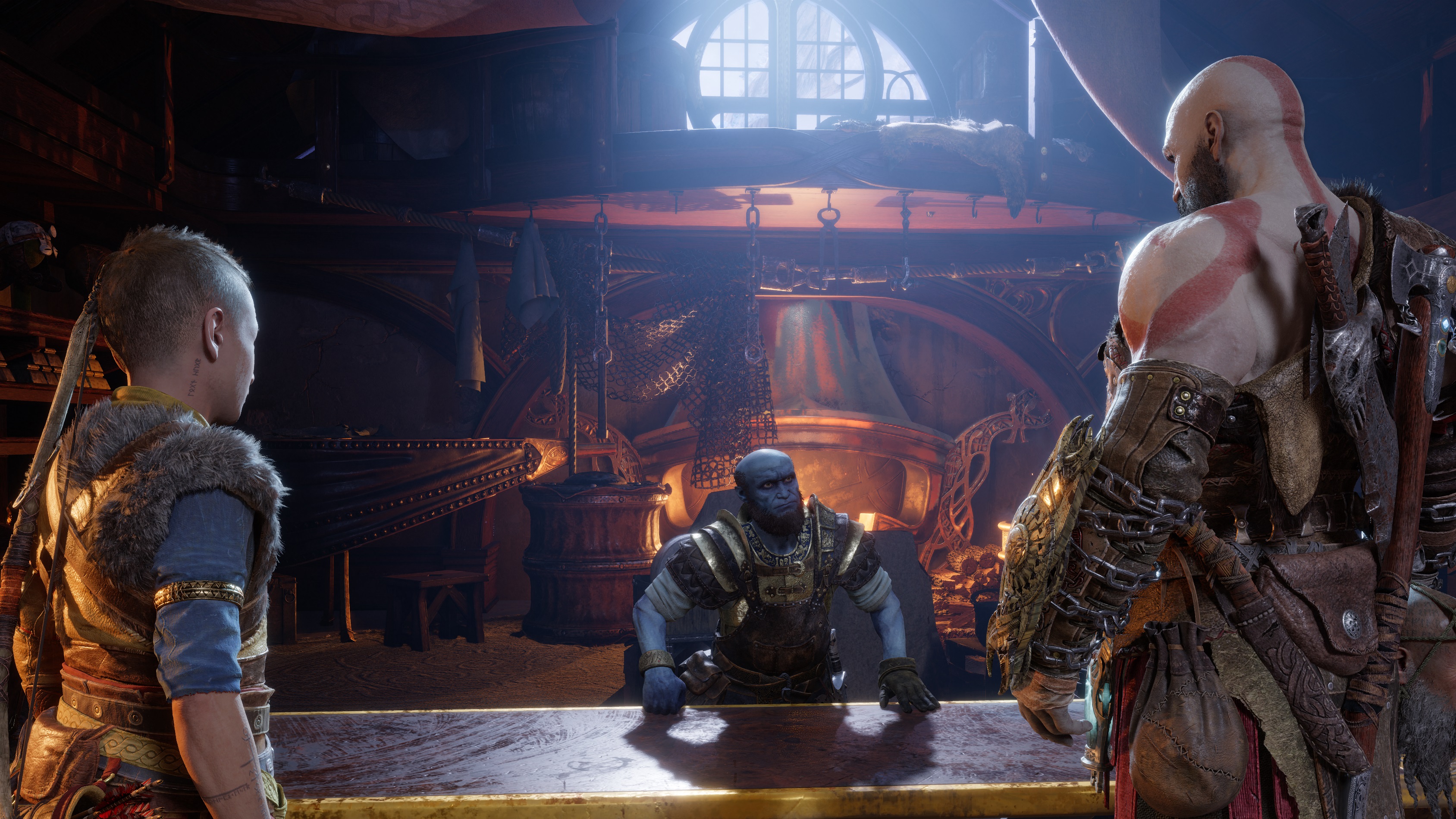God of War: Ragnarok is balanced and focused – and should be a lesson for AAA developers
How the latest God of War helps teach us 'size isn’t everything'

2022 hasn’t been an especially great year for AAA games, with many of the year’s most anticipated releases delayed into 2023 or beyond. Two notable exceptions, however, came by way of PlayStation exclusives Horizon: Forbidden West and God of War: Ragnarok – debuting in February and November, respectively. Predictably for new releases in such popular, acclaimed franchises, both games were met with considerable excitement from gamers and sales results to match.
But for me, Horizon: Forbidden West and God of War: Ragnarok do more than just sit at opposite ends of 2022’s release calendar, with the pair also sitting on opposite sides of a particularly thorny problem that continues to plague so many modern AAA games – an overabundance of ‘content’.
We’ve all heard the expression 'size isn’t everything'. More than just a saying though, these three words are a particularly handy lesson that many of today’s AAA game developers would do well to learn – and a lesson Horizon: Forbidden West in particular failed to heed.
The size problem
Loading into Horizon: Forbidden West, it doesn’t take long for players to take note of how exceptionally expansive this world is. As an ambitious imagining of a post-apocalyptic Western United States, there is a lot of setting you’re tasked with digesting when stepping into Aloy’s shoes for her latest adventure.
To the credit of developer Guerrilla Games, the setting of Horizon: Forbidden West looks undeniably gorgeous. From swamps to deserts, ruined cities to tropical beaches, Forbidden West does a valiant job of catching the eye. And if a game were judged solely on the way it looked, this year’s discussion of candidates for Game of the Year would almost certainly look a little different than it currently does.

But for all its size, Forbidden West suffers due to its falling into a problematic habit increasingly found almost everywhere you look with modern AAA game releases. In theory, the idea that a game is bigger and therefore longer to play through sounds good, but in reality bigger and longer are not efficient measures of quality when it comes to video games. If a game’s size is prioritized over substance that is worth remembering or sticking around for, that game will ultimately become repetitive, predictable and ultimately boring.
Unfortunately for Horizon: Forbidden West, it ticks all of these boxes, and by the time it ends it feels as though it has far outstayed its welcome.
Horizon isn’t alone in suffering this problem, of course, with the preoccupation of size over substance having become a recurring problem for AAA games over at least the last decade. Franchises such as Assassin’s Creed and Far Cry have become particularly notorious for it, while recent releases like Dying Light 2 and Saints Row are other examples of games to suffer from the issue.
Even the latest Halo game fell prey to the size over substance issue, with the single-player campaign for Halo Infinite arguably the most forgettable experience of the entire franchise even as it dipped its toes in the waters of open-world (and despite reportedly cutting its original world size by two thirds).
The substance solution
As a direct example of how to avoid the size problem plaguing AAA games, newly released GOTY candidate God of War: Ragnarok has emerged as a valuable demonstration of how to populate a game world in a way that provides a more fulfilling overall playthrough. The way that Ragnarok manages to commit itself to prioritizing substance over size alone allows it to present players with what is a balanced and ultimately memorable experience.
It isn’t that Ragnarok especially lacks size, either. It's not the kind of tight, linear game of yesteryear which might take only 8-10 total hours to complete, even when accounting for side quests and collectibles. The world of Ragnarok is generously sized and features a diverse variety of biomes not all too different to what Horizon: Forbidden West does. The crucial difference between Ragnarok and Horizon, however, is how the Kratos-led adventure populates its game world compared to its PlayStation stablemate.
The characters of God of War: Ragnarok are probably the most meaningful place to start when discussing the substance that allows the game to so effectively stand out. Kratos and Atreus as primary leads carry on with the winning dynamic that they demonstrated in the franchise’s previous title – even if there is much less “boy” this time around. And as with its predecessor, at any moment when it seems as if Kratos’ gruffness might tip over into the territories of feeling forced or needlessly annoying, Kratos’ supporting cast (or even one of his many mythical foes) will step in to right the ship.

Naturally for a title with such memorable and enjoyable characters, the story of God of War is also a highlight (as it has truthfully been with most of the franchise’s titles). Drawing on the mysticism and drama of authentic mythology, Ragnarok’s story is well-developed and thought out, in turn encouraging players to see the story through. The game’s main and side quests never feel overly repetitive, the puzzles are varied enough to not outstay their welcome (even if sometimes too simplistic) and there’s layers of additional non-essential lore that a player can choose to engage or not engage with at their leisure.
The combined might of all of these elements is what allows God of War: Ragnarok to stand out, with a game world that players actually want to exist in. The comparative lack of substance like this, meanwhile, is what leads Horizon: Forbidden West and the many other games guilty of similar sins to become forgettable at best – or frustratingly dull at worst.
Another of 2022’s Game of the Year candidates, Elden Ring, is yet another example of how substance can allow a game to stand out both through a first playthrough and long afterwards. That FromSoftware’s latest manages to achieve this while providing players with such a generously sized game world might be what allows it to ultimately edge out God of War: Ragnarok for Game of the Year honors, but both should serve as valuable examples for AAA game developers to learn from.
Following the map to AAA treasure island
To say it plainly, a game’s size is rarely – if ever – what makes a game memorable, let alone good. In fact, one might argue that the larger a game is in size, the greater chance there is that it will fail to deliver on sufficient substance. That’s certainly the case with Horizon: Forbidden West, where in-game fields of empty desert so often feel like rendered reminders of how little the game offers in terms of memorability and overall value.
Every corner of the world in God of War: Ragnarok, by comparison, feels genuinely vibrant and worthwhile. Even the unplayable areas I’ve encountered manage to capture the attention and spark a curiosity to know what it is that I might be missing. This is because the world of Ragnarok feels alive with substance, benefitting from how it has been populated with variety, character and an overall commitment to understanding what makes a game truly great.
I know which game I’ll remember most fondly a year from now, and it’s certainly not the one with the bigger package.
Get daily insight, inspiration and deals in your inbox
Sign up for breaking news, reviews, opinion, top tech deals, and more.

James is a senior journalist with the TechRadar Australia team, covering news, analysis and reviews in the worlds of tech and the web with a particular focus on smartphones, TVs and home entertainment, AR/VR, gaming and digital behaviour trends. He has worked for over six years in broadcast, digital and print journalism in Australia and also spent time as a nationally recognised academic specialising in social and digital behaviour trends. In his spare time, he can typically be found bouncing between one of a number of gaming platforms or watching anything horror.